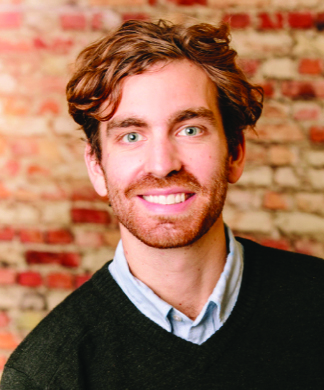EnsoData, partners connect dots ‘When you think about this patient population, it’s not very systematized or easy to understand and we want to help with that
By Liz Beaulieu, Editor
Updated 10:12 AM CDT, Fri June 7, 2024
 MADISON, Wis. – EnsoData now has strategic partnerships with React Health, a CPAP manufacturer; Parachute Health, an e-prescribing vendor; and Aeroflow Health, a CPAP provider. It’s all part of the company’s mission to connect the dots from diagnostics to therapy, says Sam Rusk, co-founder and chief artificial intelligence officer.
MADISON, Wis. – EnsoData now has strategic partnerships with React Health, a CPAP manufacturer; Parachute Health, an e-prescribing vendor; and Aeroflow Health, a CPAP provider. It’s all part of the company’s mission to connect the dots from diagnostics to therapy, says Sam Rusk, co-founder and chief artificial intelligence officer.
Here’s what Rusk had to say about EnsoData’s partnership with Aeroflow Health and how it’s excited to empower providers with predictive clinical AI tools to identify patients struggling with therapy, ultimately enabling more timely patient care, increasing patient adherence and strengthening their connection to patients.
HME News: Is Aeroflow the first provider you’ve partnered with?
Sam Rusk: We piloted with another provider in 2023 to initially develop this framework. With our partnerships with React Health and Aeroflow, we’re seeing our product address therapy and the different organizations involved in that. It’s still early in terms of what we can do there.
HME: What are the logistics of how a provider like Aeroflow uses your tools?
Rusk: Our product is an API-based product that interfaces with other systems. So, for React Health, it interfaces with their Connect (patient management software platform) and for Aeroflow, like a lot of providers, they have their own homegrown solution. It’s a standalone service that can be deployed interoperably with any CPAP device.
HME: What do your tools help providers tap into?
Rusk: Fundamentally, EnsoData uses the telemetry data from CPAP devices to look at things like mask pressure leaks and AHI. It assigns priority scores and certain clarification tasks to patients that can infer problems or intervention. We’re helping providers spend their resources and time on patients who will respond and help them manage and coordinate that. We’re (working from a foundation of) 250 million nights of historical CPAP usage from 150,000 unique patients.
HME: How might these tools evolve?
Rusk: We’re starting to think about different timelines. There’s this 90- day adherence window and then there’s this longer-term adherence window and there are a number of resources you can dedicate to that, but they’re slightly different. When you think about this patient population, it’s not very systematized or easy to understand and we want to help with that. We can categorize problems more so than they’re being done today.
HME: Part of what you’ve also done with Aeroflow is to provide your sleep coach for support and mentorship as the provider onboards the tools.
Rusk: Yes, we’re supporting the customer as they transition to a new workflow. (Despite all the technology), this is a human problem, and we value that change management and helping our customers evolve.
Comments